#regla de Ocha
Explore tagged Tumblr posts
Text
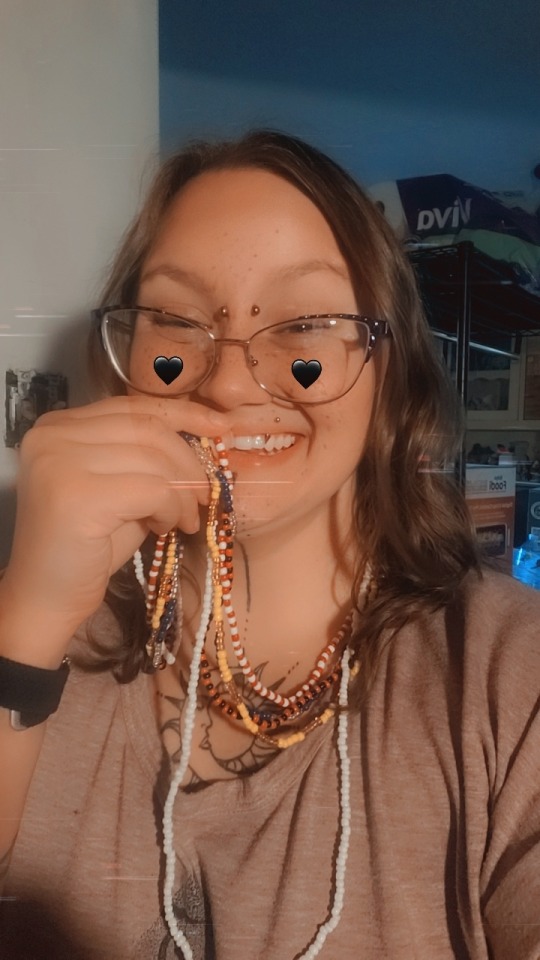
WE DID IT! WE GOT OUR BEADS!
4 notes
·
View notes
Text
Regla de Ocha
_DSF5220 I have documented many remnants of Santeria, Regla de Ocha, or Regla Lucumí rituals in Trinity Church Cemetery. I thought it had died down until I found this severed rooster head. I always feel bad for these animals.
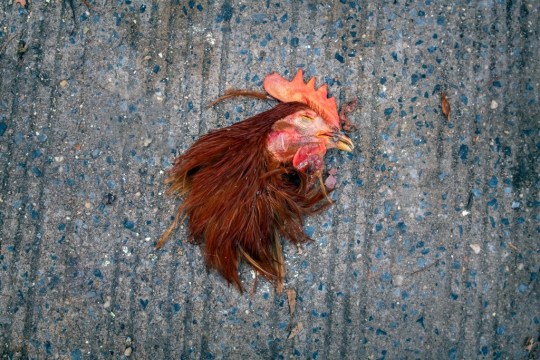
View On WordPress
#Life_On_The_Street#FujiFilm X100T#Manhattan#New York City#raw streets#Regla de Ocha#Regla Lucumí#rooster#Santeria#street#street photography#urban life#_DSF5220
4 notes
·
View notes
Text
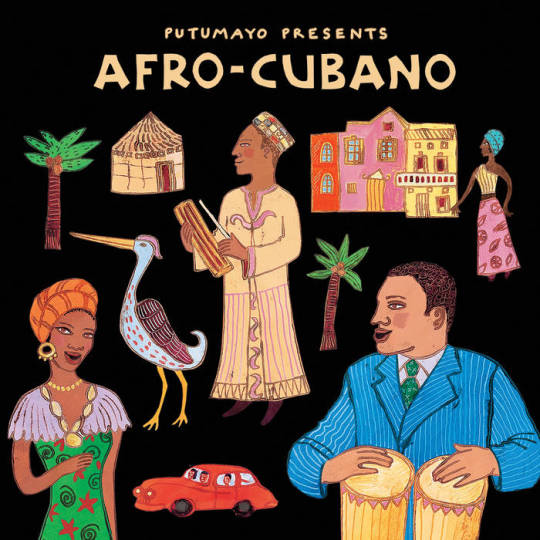
Music of African heritage in Cuba derives from the musical traditions of the many ethnic groups from different parts of West and Central Africa that were brought to Cuba as slaves between the 16th and 19th centuries. Members of some of these groups formed their own ethnic associations or cabildos, in which cultural traditions were conserved, including musical ones. Music of African heritage, along with considerable Iberian (Spanish) musical elements, forms the fulcrum of Cuban music.
Much of this music is associated with traditional African religion – Lucumi, Palo, and others – and preserves the languages formerly used in the African homelands. The music is passed on by oral tradition and is often performed in private gatherings difficult for outsiders to access. Lacking melodic instruments, the music instead features polyrhythmic percussion, voice (call-and-response), and dance. As with other musically renowned New World nations such as the United States, Brazil and Jamaica, Cuban music represents a profound African musical heritage.

Clearly, the origin of African groups in Cuba is due to the island's long history of slavery. Compared to the USA, slavery started in Cuba much earlier and continued for decades afterwards. Cuba was the last country in the Americas to abolish the importation of slaves, and the second last to free the slaves. In 1807 the British Parliament outlawed slavery, and from then on the British Navy acted to intercept Portuguese and Spanish slave ships. By 1860 the trade with Cuba was almost extinguished; the last slave ship to Cuba was in 1873. The abolition of slavery was announced by the Spanish Crown in 1880, and put into effect in 1886. Two years later, Brazil abolished slavery.
Although the exact number of slaves from each African culture will never be known, most came from one of these groups, which are listed in rough order of their cultural impact in Cuba:
The Congolese from the Congo Basin and SW Africa. Many ethnic groups were involved, all called Congos in Cuba. Their religion is called Palo. Probably the most numerous group, with a huge influence on Cuban music.
The Oyó or Yoruba from modern Nigeria, known in Cuba as Lucumí. Their religion is known as Regla de Ocha (roughly, 'the way of the spirits') and its syncretic version is known as Santería. Culturally of great significance.
The Kalabars from the Southeastern part of Nigeria and also in some part of Cameroon, whom were taken from the Bight of Biafra. These sub Igbo and Ijaw groups are known in Cuba as Carabali,and their religious organization as Abakuá. The street name for them in Cuba was Ñáñigos.
The Dahomey, from Benin. They were the Fon, known as Arará in Cuba. The Dahomeys were a powerful group who practised human sacrifice and slavery long before Europeans arrived, and allegedly even more so during the Atlantic slave trade.
Haiti immigrants to Cuba arrived at various times up to the present day. Leaving aside the French, who also came, the Africans from Haiti were a mixture of groups who usually spoke creolized French: and religion was known as vodú.
From part of modern Liberia and Côte d'Ivoire came the Gangá.
Senegambian people (Senegal, the Gambia), but including many brought from Sudan by the Arab slavers, were known by a catch-all word: Mandinga. The famous musical phrase Kikiribu Mandinga! refers to them.
Subsequent organization
The roots of most Afro-Cuban musical forms lie in the cabildos, self-organized social clubs for the African slaves, and separate cabildos for separate cultures. The cabildos were formed mainly from four groups: the Yoruba (the Lucumi in Cuba); the Congolese (Palo in Cuba); Dahomey (the Fon or Arará). Other cultures were undoubtedly present, more even than listed above, but in smaller numbers, and they did not leave such a distinctive presence.
Cabildos preserved African cultural traditions, even after the abolition of slavery in 1886. At the same time, African religions were transmitted from generation to generation throughout Cuba, Haiti, other islands and Brazil. These religions, which had a similar but not identical structure, were known as Lucumi or Regla de Ocha if they derived from the Yoruba, Palo from Central Africa, Vodú from Haiti, and so on. The term Santería was first introduced to account for the way African spirits were joined to Catholic saints, especially by people who were both baptized and initiated, and so were genuine members of both groups. Outsiders picked up the word and have tended to use it somewhat indiscriminately. It has become a kind of catch-all word, rather like salsa in music.
The ñáñigos in Cuba or Carabali in their secret Abakuá societies, were one of the most terrifying groups; even other blacks were afraid of them:
Girl, don't tell me about the ñáñigos! They were bad. The carabali was evil down to his guts. And the ñáñigos from back in the day when I was a chick, weren't like the ones today... they kept their secret, like in Africa.

African sacred music in Cuba
All these African cultures had musical traditions, which survive erratically to the present day, not always in detail, but in the general style. The best preserved are the African polytheistic religions, where, in Cuba at least, the instruments, the language, the chants, the dances and their interpretations are quite well preserved. In few or no other American countries are the religious ceremonies conducted in the old language(s) of Africa, as they are at least in Lucumí ceremonies, though of course, back in Africa the language has moved on. What unifies all genuine forms of African music is the unity of polyrhythmic percussion, voice (call-and-response) and dance in well-defined social settings, and the absence of melodic instruments of an Arabic or European kind.
Not until after the Second World War do we find detailed printed descriptions or recordings of African sacred music in Cuba. Inside the cults, music, song, dance and ceremony were (and still are) learnt by heart by means of demonstration, including such ceremonial procedures conducted in an African language. The experiences were private to the initiated, until the work of the ethnologist Fernando Ortíz, who devoted a large part of his life to investigating the influence of African culture in Cuba. The first detailed transcription of percussion, song and chants are to be found in his great works.
There are now many recordings offering a selection of pieces in praise of, or prayers to, the orishas. Much of the ceremonial procedures are still hidden from the eyes of outsiders, though some descriptions in words exist.
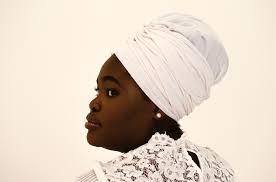
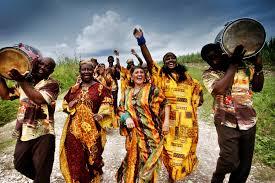
Yoruba and Congolese rituals
Main articles: Yoruba people, Lucumi religion, Kongo people, Palo (religion), and Batá
Religious traditions of African origin have survived in Cuba, and are the basis of ritual music, song and dance quite distinct from the secular music and dance. The religion of Yoruban origin is known as Lucumí or Regla de Ocha; the religion of Congolese origin is known as Palo, as in palos del monte.[11] There are also, in the Oriente region, forms of Haitian ritual together with its own instruments and music.
In Lucumi ceremonies, consecrated batá drums are played at ceremonies, and gourd ensembles called abwe. In the 1950s, a collection of Havana-area batá drummers called Santero helped bring Lucumí styles into mainstream Cuban music, while artists like Mezcla, with the lucumí singer Lázaro Ros, melded the style with other forms, including zouk.
The Congo cabildo uses yuka drums, as well as gallos (a form of song contest), makuta and mani dances. The latter is related to the Brazilian martial dance capoeira
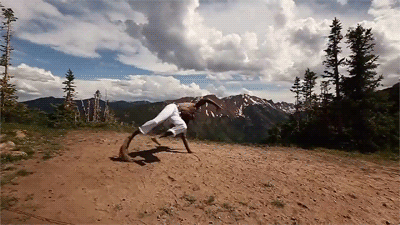
#african#afrakan#kemetic dreams#africans#brownskin#brown skin#afrakans#african culture#fitness#afrakan spirituality#afro cuban music#afro cuban#igbo#yoruba#congo#african music
185 notes
·
View notes
Text
Resources for Cuban and Caribbean Folk Magic 🇨🇺
Disclaimer: Cubans are not a monolith so when we say ‘Cuban Folk Magic’ its like saying ‘American Folk Magic’ in the sense that it is a BROAD term that includes multiple different cultural threads and traditions. Start by researching your ancestors and where they were from as a jumping off point.
Also, many of these resources are not Cuban themselves, but they either share the same practices or are academic or general sources. I have made it clear when a source isn’t Cuban. For this reason, I have expanded it to be the Cuban AND Caribbean Folk Magic List.
The List
Creators:
Irka Mateo - Taino - Insta 🇩🇴
Religion.Ancestral.Taino - Insta 🇵🇷
Sancista Brujo Luis - Espiritismo/Taino-Youtube | Blog 🇵🇷
OkaniLuna - Brujería/Taino - Youtube🇩🇴
Juliet Diaz - Brujería/Taino/Author - Instagram 🇨🇺
Sancista 7 Espadas - Espiritismo - Insta 🇵🇷
Odofemi - Regla de Ocha - Tumblr 🇺🇸
Eve the Medium - ATR/Espiritismo - Youtube 🇩🇴
Yeyeo Botanica - ATR/Espiritismo- youtube 🇺🇸
Botanica Candles & More - Great Podcast!! - youtube 🇨🇺 🇺🇸
Connecting w/ Guides and Goals by Adunola - youtube 🇺🇸
Hatuey Museum of Archaeology, Baracoa, Cuba - Taíno archaeologists photos and blog - Link
Florida Memory - Photos and Articles on Folk History of Florida and surrounding areas - Link
Articles
San Lazaro - Wikipedia - Novena - Yeyeo Botanica
Caridad del Cobre - Wikipedia
Orisha and Palo Herbs Directory- Website
Ewe (Herbs) Photo Guide - Website
Pueblo Originario Taino Section - Website
Taino and Agua Dulce essay by Jorge Estevez - Link
Memoir of Florida’s Indigenous People by Hernando Escalante de Fontaneda - Link
Tacachale: Essays on Indigenous Floridians by Milanich and Proctor - Link
Huellas Indigenas en Cuba - Taino Spirituality in Cuban Folk Magic Article - Link
Juracán: The Sacred Meteorology of Swamp and Storm by Jazmin Calderon Torres
Books:
Taino Library* - Amazing resource for books of all kinds, many books about Taino and Caribbean Spiritualities, Folklores and Songs! Multiple books on Cuban Myths and Folktales! Highly recommend - Website 🇵🇷
Espiritismo by Hector Silva🇩🇴
A Year in White by C Lynn Carr
The Modern Art of Brujería by Lou Florez(VERY BASIC just as a general introduction to what alot of modern Folk Practices look like)
American Brujeria by J. Allen Cross 🇲🇽🇺🇸
El Monte by Lydia Carbera 🇨🇺
Palmetto Country by Stetson Kennedy - Link
Movies and Videos:
Cecilia (1982) - Youtube
Las Profecias de Amanda - Youtube
Susie Jim Billie, Medicine Woman Interview - Link
Proyecto Cuba Indigena - Link
Miguel Sague, Taíno Spirituality - Link
**This list will grow as I find more resources that are reliable enough to share. If you have recommendations or would like to be added, please reach out.
Luz y Progreso 🕯️
(I also have included a Research Guide below the Cut!)
Guide to researching based on your ancestry:
If your family has African roots, you can seek Ocha/Lukumi, Palo, Arara, Cuban Vodou and other African Traditional Religions and Practices. Please approach elders within these respective practices to further your connection to them, rather than using books to create a practice for yourself. These are ancient, community based and are lifelong commitments, not just trendy powerful spells for you to get what you want.
If your family has indigenous roots, research Taino spirituality and modern practices , but also know that there were other tribes in the western and centeral parts of Cuba, with their own languages and traditions you can still learn about like the Guanahatabey. You may also consider joining a Yukayeke, but this isn’t required. Reconnecting and decolonizing is a separate and important topic that is not inherently witchcraft or folk magick-y… HOWEVER, researching and informing yourself with these practices can help you to see their influence within modern folk practices.
If your family has Asian roots, research the buddhist cults and folk practices throughout Cuba! Believe it or not, we also have people of Middle Eastern descent in Cuba who brought with them their own Hindu and Arabic Folk Traditions, which can be found throughout Cuba and the Caribbean as a whole.
If your family has Spanish roots, research some open practices like Espiritismo and Folk Catholicism! Look into the Patron Saints of Cuba, La Virgen de La Caridad del Cobre and San Lazaro. These also tie in to many of the other cultures who were forced to adopt certain elements to ensure survival of their traditions! You can also look into Brujería. Much like modern witchcraft, modern brujería has been commodified to hell and back, but there is still some great knowledge and power to be found there.
The fact of the matter is, that most of us can fit ourselves into two or more of these categories, and this crossover is where Folk Magic is often born. Its also important to note, in alot of these traditions you shouldn’t learn or share certain things at certain times, so some sources who share too much about Ocha and other ATRs should be avoided. Also, I can’t stress how important it is to talk to your family! Ask them about folklore or legends and stories! Also research history and folkore of the specific areas in Cuba your family is from. A-lot of folk magic is incorporated into stories.
Bendiciones, good luck on your Journey!🦎🐊

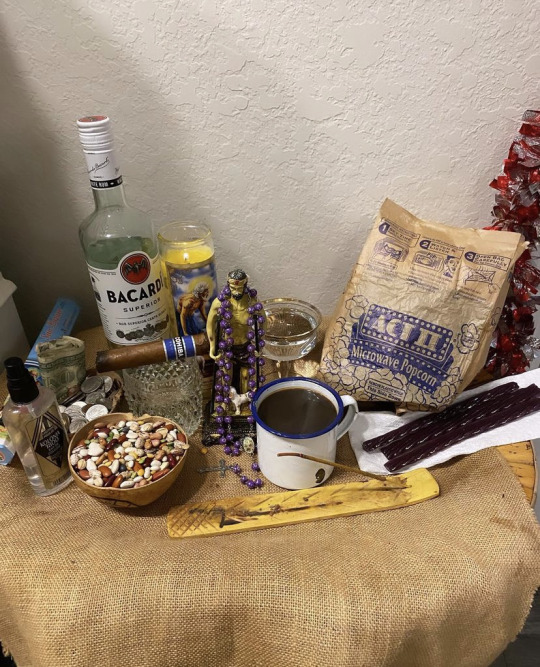
#witchcraft#bioregional animism#bruja#brujeria#santeria#cuba#cuban#espiritismo#mediumship#florida#florida witch#swamp witch#witch#traditional witchcraft#taino#taino spirituality#folk magic#folk witch#folk witchcraft#resource list
106 notes
·
View notes
Text
List of closed practices
Will add to if needed feel free to add suggestions

What is a closed practice? A closed Practice is a practice or religion you cannot take part in unless you are either born into it or underwent an initiation procedure. It is possible to be invited into a closed practice however the individual must be verified and authorized before officially being able to participate in said practice.
Why are some practices closed? Practices can be closed for various reasons but mostly due to colonialism, specific cultural values and beliefs that would never be understood by outsiders who were not truly immersed in the community or a combination of those.

Closed practices
🦋 African Practices [Voodou, Hoodou, Voudon, ect] 🦋 Santería, Regla de Ocha, Regla Lucumí, Lucumí 🦋 Native american practices 🦋 Sámi 🦋 Gardnerian and Alexandrian Wicca 🦋 Santeria 🦋 Brujería 🦋 Shamanism 🦋 Romani practices 🦋 Māori 🦋 Asian folk practices 🦋 Umbanda 🦋 Jurema 🦋 Candomblé 🦋 Quimbanda 🦋 Almost all tribal practices 🦋 Zoroastrianism 🦋 Obeah [Suggested by @practical-hearthcraft] 🦋 Pheryllt Druidism [Suggested by @wild-magick-child] 🦋 AODA Druidism [Suggested by @wild-magick-child] 🦋 OBOD Druidism [Suggested by @wild-magick-child] 🦋 Welsh/Anglesy Druidism [Suggested by @wild-magick-child]

Semi-Closed practices
🦋 Judaism [you need to earn the right to be called Jewish] 🦋 Islam 🦋 Buddhism 🦋 Hinduism 🦋 Brujería [The specific practice, not the word] 🦋 Shintō [Mainly open, some parts are closed] 🦋 British Druidism [Need to be initiated] [Suggested by @wild-magick-child]

Things that are apart of closed practices
🦋 Honey and sour jars 🦋 White sage [Native American] 🦋 Using coyote bones 🦋 Lilith
#my posts#closed practices#baby witch info#witchblr#witchcraft#witch#witches of tumblr#witchcraft community#witch community
38 notes
·
View notes
Text
Click the Title Link to DOWNLOAD for Free from the BLACK TRUEBRARY

Click the Title Link to DOWNLOAD for Free from the BLACK TRUEBRARY
Outside of Cuba, Palo is generally called Palo Mayombe ; however, this is a misnomer since not all lineages and houses are truly Mayombe – in fact, most are not. To my knowledge there is only one (perhaps a couple) Munanzo outside of Cuba that are accepted as a true Mayombe houses amongst the elders on the Island.

In Cuba, “Palo Monte” is used far more frequently to speak to the entire body of Regla-Kongo Palo tradition. Other terms such as Palo Cruzado (‘crossed palo’, denoting heavy syncretization with other religions), Palo Cristiano (‘Christian palo’) and Palo Judio (‘Jewish palo’, not actually jewish, but simply non-Christian) deserve a brief mention. However, these are not specific ramas of Palo, but rather terms that are used to denote the degree of syncretism and mixing in individual lineages and practices.
There are many houses (munansos) and foundational lineages (ramas) of Palo Monte, but commonly they are understood to fit within three major forms or sub ‘reglas’ within the greater Regla-Kongo:
Mayombe
Biyumba (Vrillumba o Brillumba)
Kimbiza
Palo Mayombe is the oldest and most orthodox form of Palo. The origins trace back to a specific Nkisi cult in the Mayombe region of Cabinda (NW Congo) from where it gets its name and the tradition came into its own in the caves and wilderness of the Pinar del Rio highlands of Cuba. Mayomberos typically shun away from syncretism and are extremely orthodox in our practices. The most well known of the Mayombe houses are the houses of “Batalla Saca Empeño” and “Bejuco Nfinda”.
Palo Biyumba developed out of Palo Mayombe and rose in popularity during Cuba’s war of Independence. It was the first regla to initiate people of non-Bantu ancestry and frequently worked with and developed pacts with dead spirits of no particular blood or spiritual lineage (often times to send them out for warring intentions). It is a vast regla and has many ramas and sub-lineages. Indeed, a great number of houses today are some offshoot of Biyumba. Broadly speaking, Palo Biyumba is more oriented toward the various mpungos and over time some lineages have introduced a degree of syncretization with elements of Ocha and Catholicism.
Palo Kimbisa was popular on the eastern side of the Cuban island and has absorbed many influences from Catholicism to Freemasonry to Haitian Vodou. Kimbisa likely originated within an already syncretized Catholic-Kongo religious tradition from the Kingdom of Kongo following Kimpa Vita’s Christian reform in the 18th C. In Kimbisa the mpungos are paramount and are seen as divinities and saints. Thus, Kimbiseros will venerate the mpungos and focus much of their work calling upon them, instead of upon the dead. The most well known Kimbisa rama is Andrés Petit’s La Regla Kimbisa de Santo Cristo del Buen Viaje.
The Kimbisa prendas/ngangas I have seen also tend to be huge in comparison to Mayombe. Although my elders have reassured me that there are Kimbisa prendas that are built almost identical to Mayombe as there is more variance per house/lineage than across the greater sub-reglas. It is also common to see Kimbisa (as well as Briyumba) prendas with crucifixes. Moreover, many Kimbiseros and Biymberos will make a distinction between prendas judias or prendas ndoki(those without crucifixes and containing the bones of non-baptized individuals) used to curse, kill, and other malefica; and prendas cristianas (with cross and baptized nfumbe) used to heal and general benefica. This distinction does not appear in Mayombe.
Assortment of now defunct/dormant Briyumba Ngangas on display in the Museo Municipal de Regla
Click the Title Link to DOWNLOAD for Free from the BLACK TRUEBRARY
14 notes
·
View notes
Text
Different Styles Of Voodoo
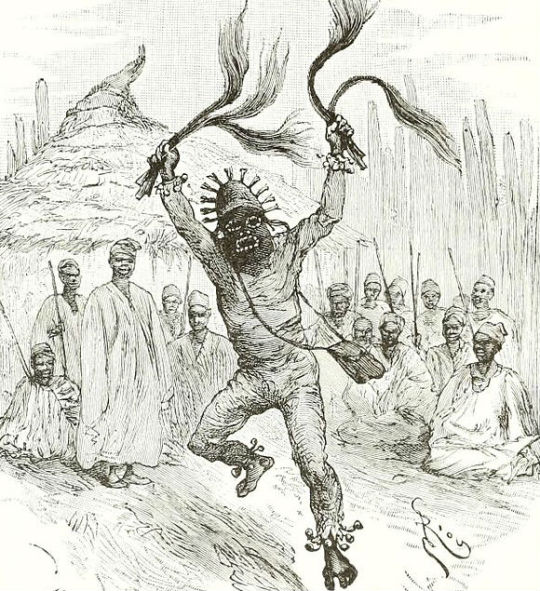
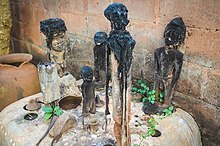
When I hear that a country or city don't practice real Vaudou aka voodoo it bothers me when that person don't really know what voodoo, Vodou, Vodun etc is. Some think that it started in Haiti or that it isn't real if your not initiated in Haiti. So I wanted to make this quick post to show a few of the different styles of voodoo there are. Do the proper research and choose which practice calls to you.

First up is African Vodun is an is the birth place of vodun a ancient religion practiced by some 30 million people in the West African nations of Benin, Togo and Ghana. With its countless deities, animal sacrifice and spirit possession, voodoo — as it's known to the rest of the world — is one of the most misunderstood religions on the globe.

Second Haitian Vodou is an African diasporic religion that developed in Haiti. It arose through a process of syncretism between several traditional religions of West and Central Africa and Roman Catholicism. Vodou revolves around spirits known as lwa. Typically deriving their names and attributes from traditional West and Central African divinities, they are equated with Roman Catholic saints and the central ritual involves practitioners drumming, singing, and dancing to encourage a lwa to possess one of their members and thus communicate with them.
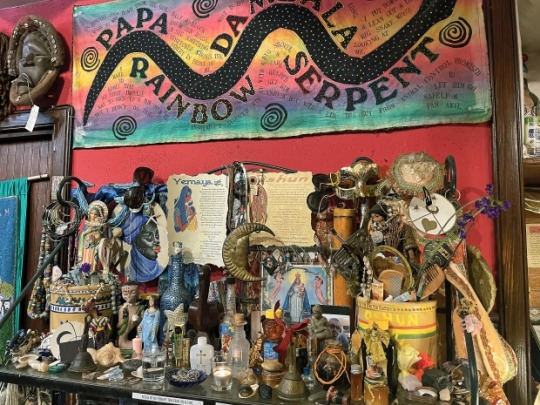
Third. Louisiana Voodoo, also known as New Orleans Voodoo, is an African diasporic religion which originated in Louisiana, now in the southern United States. It arose through a process of syncretism between the traditional religions of West Africa, Haitian Vodou and some christianity.
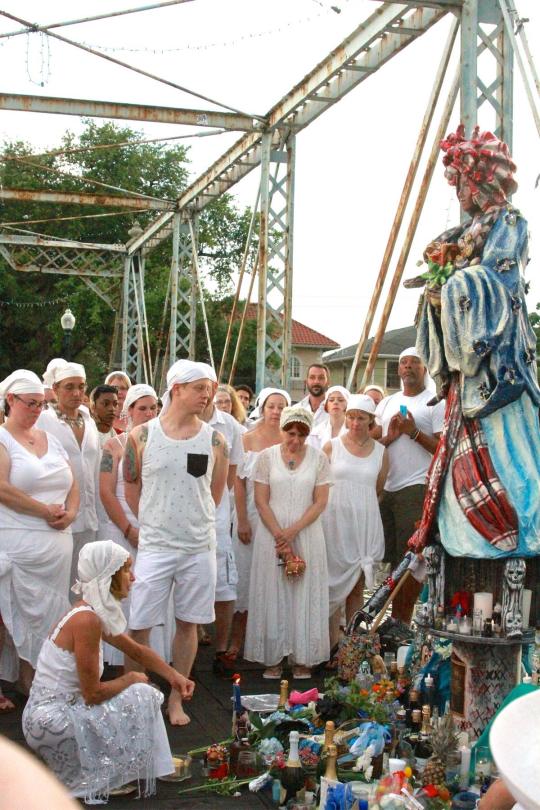

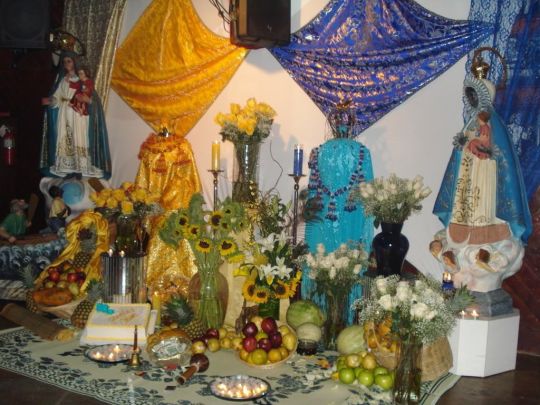
Forth Santería, also known as Regla de Ocha, Regla Lucumí, or Lucumí, is an African diasporic religion that developed in Cuba during the late 19th century. It arose through a process of syncretism between the traditional Yoruba religion of West Africa, the Catholic form of Christianity, and Spiritism. This is the same as the Ifa in Africa except they use saints also
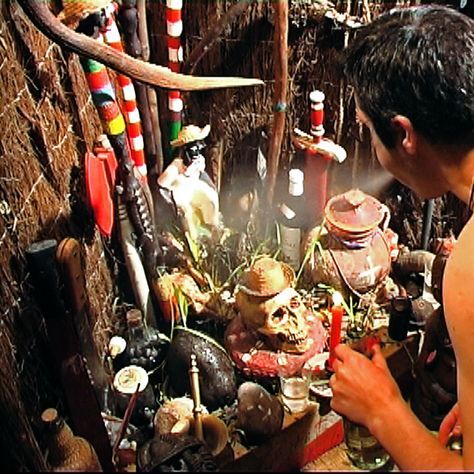

Fifth Palo: also known as Las Reglas de Congo, is an African diasporic religion that developed in Cuba. This is the first practice that hit first before Santeria. It arose through a process of syncretism between the traditional Kongo religion of Central Africa, the Roman Catholic branch of Christianity, and Spiritism.
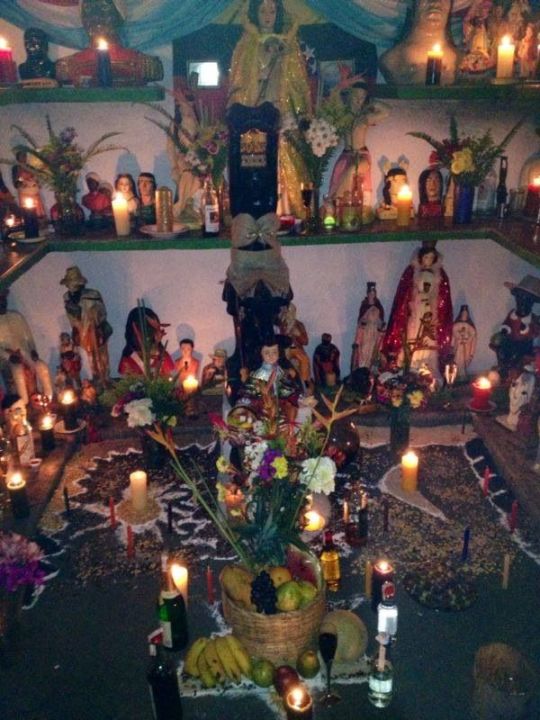
Sixth Espiritismo: Spiritism. Espiritismo (Spiritism) is rooted in the belief system that the spirit world can intervene in the human world and is widely practiced in Puerto Rico it not voodoo but I wanted to add it. At its most basic level, it invokes God and The Positive Spirits to divine for and assist the person. There is the use of a table covered with a white cloth, a large bowl full of water, and a crucifix. There are no initiations into this tradition and people work together at gatherings called Misas.
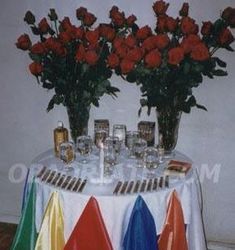
Seventh Sanse: Sanse is a cross between Spiritism and the 21 Divisions. In this tradition, the dead and the Lwa (or Misterios) are worked with spiritually. There is an initiation called a Bautizo (Baptism) and people work withall sorts of different spiritual tableaus, or frameworks.

Eight. Obeah, or Obayi, is a series of African diasporic spell-casting and healing traditions found in the former British colonies of the Caribbean. These traditions derive much from traditional West African practices that have undergone cultural creolization.
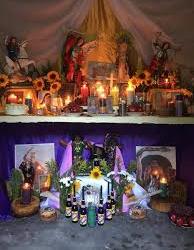
Ninth. Dominican Vudú, known as Las 21 Divisiones (The 21 Divisions), is a heavily Catholicized syncretic shamanistic religion of African-Caribbean origin which developed in the erstwhile Spanish colony of Santo Domingo on the island of Hispaniola. Now 21 Divisiones/Dominican vudu is very similar to the tchatcha/kwakwa/Deka lineage in Haiti. In 21 Divisiones and in the tchatcha lineage of Haitian vodou, is the north part of Hati and the initiations are different and the temples are organized differently.
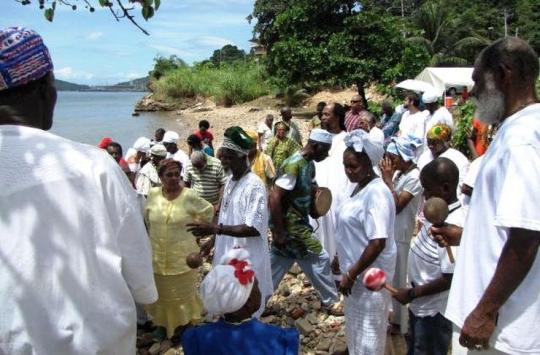

Tenth. Trinidad Orisha, also known as Shango, is a syncretic religion in Trinidad and Tobago and the Caribbean, originally from West Africa.
I these are some of the voodoo style practices around the world .
#Types of voodoo#African practices#Voodoo#Vodou#Vodun#Spiritual#Voodoo Styles#Different voodoo#Voodoo styles#follow my blog#ask me anything#ask me stuff#like or reblog#like and comment#Spiritual information
48 notes
·
View notes
Text
LAS PIEDRAS SAGRADAS DE LA SANTERÍA
En las culturas afroamericanas las piedras tienen un significado mágico, principalmente entre los grupos de origen yoruba, cuyo sistema religioso es la Regla de Ocha, pero que es más conocido como la santería. También en la Regla de Palo, que es de origen bantú, las piedras son relacionadas con los hombres.
Los otanes ( piedras ) son objetos que simbolizan el poder sobrenatural del orisha al que se le rinde culto.
Los yorubas les confieren una acción determinante a las piedras sagradas, que se denominan otanes. En las piedras de unidad monolítica se asienta el alma de los dioses u orichas; las piedras atrapan el poder y es desde donde emanan sus energías que influyen en la vida de los creyentes ayudándolos a vencer las adversidades y facilitándoles su mejor desenvolvimiento. Los santeros o cariochas adorarán dichas piedras para siempre.
Las piedras u otanes son seleccionadas por los sacerdotes o padrinos expertos en descubrirlas. No hay que confundirse, se pueden hallar un pedazo de muro de cemento o de concreto o un turrón de arena; ésas no son piedras. Se eligen de acuerdo con su aspecto, su color, su forma y el lugar en donde fueron halladas, ya sea en una montaña, en la superficie o desenterrándola de los brazos de Oggedé (la tierra). Para que sean aprobadas hay que preguntarles a los santos si cada una posee las condiciones interiores requeridas. Esta pregunta se hace por medio del oráculo de Biagué o de los cocos. Si alguna de las piedras resulta desaprobada en esta consulta, debe ser sustituida por otra.
Todas las piedras aprobadas pasarán después por un ritual de requisito, que es “el lavatorio”, en el cual son purificadas por el lavado en omiero acompañado de una letanía de cantos de Osain entonados por un coro de santeros sentados en semicírculo y dirigidos por el obbá. (El omiero es una sustancia líquida compuesta por aguas místicas, yerbas de fundamento y otros ingredientes secretos que este autor no puede revelar). El olor que desprende el omiero en movimiento y el esmero con que son tratadas las piedras por los santeros crean una atmósfera litúrgica donde se van liberando las fuerzas de la naturaleza y se experimenta una sensación indescriptible.
ORICHAS Y OTANES
Cada uno de los orichas o dioses tiene sus propias piedras:
֎ ELEGGUÁ: lleva una piedra triangular de camino interna, sepultada en su figura de cabeza amasada con diferentes tierras, veintiún elementos vegetales y metales.
֎ OGGÚN: en su olla de hierros con siete instrumentos que representa el martillo, el yunque, el azadón y los clavos de vía, va la piedra de ogundá, que es traída del monte.
֎ OBATALÁ: en su sopera se depositan sus cinco piedras blancas calcíneas, cuatro son de Obatalá y una más achatada es de Oggé, a veces va envuelta en algodón y cascarilla.
֎ OCHÚN: lleva cinco piedras redondeadas tomadas de un río. Las llaman chinas pelonas, pero realmente se llaman ocheotan
֎ YEMAYÁ: se fundamenta con siete piedras. En Cuba se toman también de río; en Brasil y en Trinidad exigen que sean marinas. Son más porosas que lisas y se les llama oddiotan.
֎ OLOKÚN: lleva diversas piedras del fondo del mar junto con caracoles y conchas. Tradicionalmente se le ponían perlas, corales y hasta monedas antiguas.
֎ OYÁ: contiene nueve piedras arcillosas y marmóreas, con vetas rojizas y moradas, y se les llama osaotan.
֎ CHANGÓ: en su batea de madera se colocan seis otanes negros y alargados. También le pertenece la piedra del rayo, Obbaraotan.
Los collares que usan los santeros como protección también son piedras cristalinas, de diferentes vetas minerales, pues las cuentas de los collares nunca pueden ser de plástico. También deben pasar por un proceso ritual. Los collares o eleques son representaciones de los orichas y los otanes son el recinto donde habitan en esta tierra.
LAS PIEDRAS Y SUS ATRIBUTOS
† Piedra del rayo. Es un monolito negro alargado y más picudo por uno de sus extremos. Algunos afirman que cae con el rayo, pero lo cierto es que debido a su energía magnética produce descargas eléctricas durante las tormentas. Ha sido usada como hacha por los grupos aborígenes del Caribe, como los siboneyes y taínos, y aparece en Cuba, Venezuela, Puerto Rico y República Dominicana.
† Piedras preciosas. Los cristales son de agua y otros líquidos fosilizados. Desde tiempos remotos se tuvo la costumbre, en casi todas las civilizaciones, de ornamentar a las autoridades, como jefes, caciques y reyes, con piedras cristalinas que representaban el poder, tales como esmeraldas, rubíes y diamantes, los cuales se constituían en tesoros del reino y le daban fuerza económica.
† Ámbar. Es una piedra resinosa de alta frecuencia magnética. Fue muy importante para el descubrimiento de la electricidad. Pertenece a Ochún; es una piedra del amor y atrae la felicidad. Los zares de la antigua Rusia lo usaban como talismán.
† Azabache. Fue muy estimado por las antiguas civilizaciones árabe y judía. Protege a los niños del mal de ojo y aleja las maldiciones. Pertenece a Elegguá. Es una piedra vegetal muy valorada.
† Piedra volcánica. Se forma cuando la lava incandescente se enfría, petrificándose. Pertenece al dios Argayú, que es el patrón que premia el esfuerzo y trae la prosperidad. Nos advierte de las pérdidas.
† Cuarzos. Los cuarzos blancos y opalinos pertenecen a Obatalá. Regulan el equilibrio nervioso, fortalecen la memoria, aclaran la conciencia y traen la paz. Los cuarzos violáceos le pertenecen a Oyá y los rosas a Naná Burucú, que tiene la capacidad de eliminar las infecciones renales y mejorar la circulación. Tiene alta composición de magnesio.
† Turquesa. Es de las más antiguas piedras preciosas. Había un viejo refrán español: “una mano con turquesa no conoce la pureza”. Pertenece a Yemayá y protege el hogar y la familia.
† Lapislázuli y zafiro. Pertenecen a Olókum, que es un dios parecido a Neptuno, y aseguran la prosperidad económica. Se les considera piedras masculinas.
† Esmeralda. Son piedras que pertenecen al dios Oggún. Es suyo el poder de premiar el esfuerzo y ayudar a vencer a los enemigos. Protege la industria y la productividad.
† Granate. Es una piedra de Changó y procura el éxito y el triunfo en los negocios. Changó fue un soberano del pueblo de Oyo; es dios del fuego.
† Ágata, aguamarina y amazonita. Se consagran a Obbalantobaro, que es la unión de Las Siete Potencias africanas. Alejan la maldición y rechazan las malas intenciones enviadas por alguien.
† Obsidiana. Es un mesolito de origen volcánico; piedra muy cortante que en el mundo prehispánico se utilizó para construir puntas de lanza y los cuchillos con que se hacían sacrificios humanos para los dioses aztecas. En la santería se le considera un arma de Ochasi y el cazador.
† Topacio. En la santería se le atribuye al dios Inle, que es el médico divino y dueño de la pesca. Impide el acontecimiento de enfermedades.
El hombre soñó con la piedra filosofal y añoró que ésta le diera respuesta a las inquietudes de la vida, y plasmó esta búsqueda en obras literarias fantasiosas. Sin embargo, por medio de las piedras podemos obtener información histórica sobre la geología, los accidentes y fenómenos del planeta.
La naturaleza nos concedió además el aire, el agua y los alimentos para sobrevivir... lo mismo que la energía de las piedras. Cuando Olofi los alcanza con sus rayos divinos desde Olórum las convierte en sagradas, por eso agradezcamos su enseñanza y su protección cuidando del equilibrio ecológico que las sustenta.
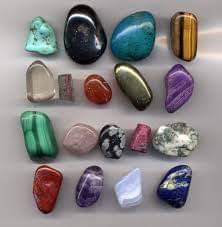
7 notes
·
View notes
Text

𝗕𝗮𝗯𝗮𝗹𝗼𝗰𝗵𝗮𝘀 𝗲 𝗜𝘆𝗮𝗹𝗼𝗰𝗵𝗮𝘀:
Son los sacerdotes en Regla de Osha, (Baba=Padre Ocha-Osha = Orishas-deidad) Babalocha título para los hombres (Iya=Madre Ocha-Osha = Orishas-deidad) Iyalocha título para las mujeres y tienen la facultad de iniciar en Regla de Osha, entregar Collares de Fundamento (Elekes), Registrar con el Diloggún, participar en la ceremonia (Kari Osha) entre otras. Son los intermediaros entre los consultantes o aleyos y los Orishas, su trabajo está en ser guías, consejeros y realizar los trabajos correspondientes de a cuerdo a cada Registro con el Diloggún.
2 notes
·
View notes
Text
Santeria differs from Voodoo in one major way:
Instead of French colonialism and the sugar industry it's Spanish colonialism and....the sugar industry. The French were the most blatant money-grubbing bastards in the colonial world of the Americas, which when their competition was the proto-US and the Spanish Empire and the Portuguese Empire (and all the little attempts the bigger ones ground up and got rid of) is a hard margin to hit but they did. The Spanish offered a caste system that had a narrowly wider region to integrate.....and in the end the main gap is instead of calling the Orishas Loa they're called Santos or Saints and there's a more directly Catholic and less overtly African aspect to Santeria.
#lightdancer comments on history#black history month#african-american history#cuban history#santeria
5 notes
·
View notes
Text
I don’t post on here because I don’t want too and I don’t use tumblr that much but came to remind is that Orichas/Orishas don’t speak through tarot. You’re not speaking to an Orisha thru tarot, I am not a elder within the community to even say on this app how to contact them especially cause you gotta be initiated into Regla de Ocha/Santeria/Lukumi or born into it(also includes Orisha practices like Candomble,Isese and etc) Go argue with your madre not me.
#bruja#brujasoftumblr#Santeria#Lukumi#lucumi#Regladeocha#bye#also learn the difference between an ADR and an ATR
0 notes
Text
relates heavily to olokun
I wish the knowledge of her rituals wasn't lost forever
0 notes
Text

Mff elegua 🙏🏽❤️🖤
Mff ogun 🙏🏽💚🖤
#Santeria#regla de ocha#ocha#lukumi#ifa#elegua#ellegua#elegba#ogun#oggun#Ochosi#warriors#guerreros#Orishas#oricha#orisa#Yoruba
30 notes
·
View notes
Text

I told y’all to stop approaching the orisa/orisha without permission... Cut the shit. Also, learn to spell.
40 notes
·
View notes
